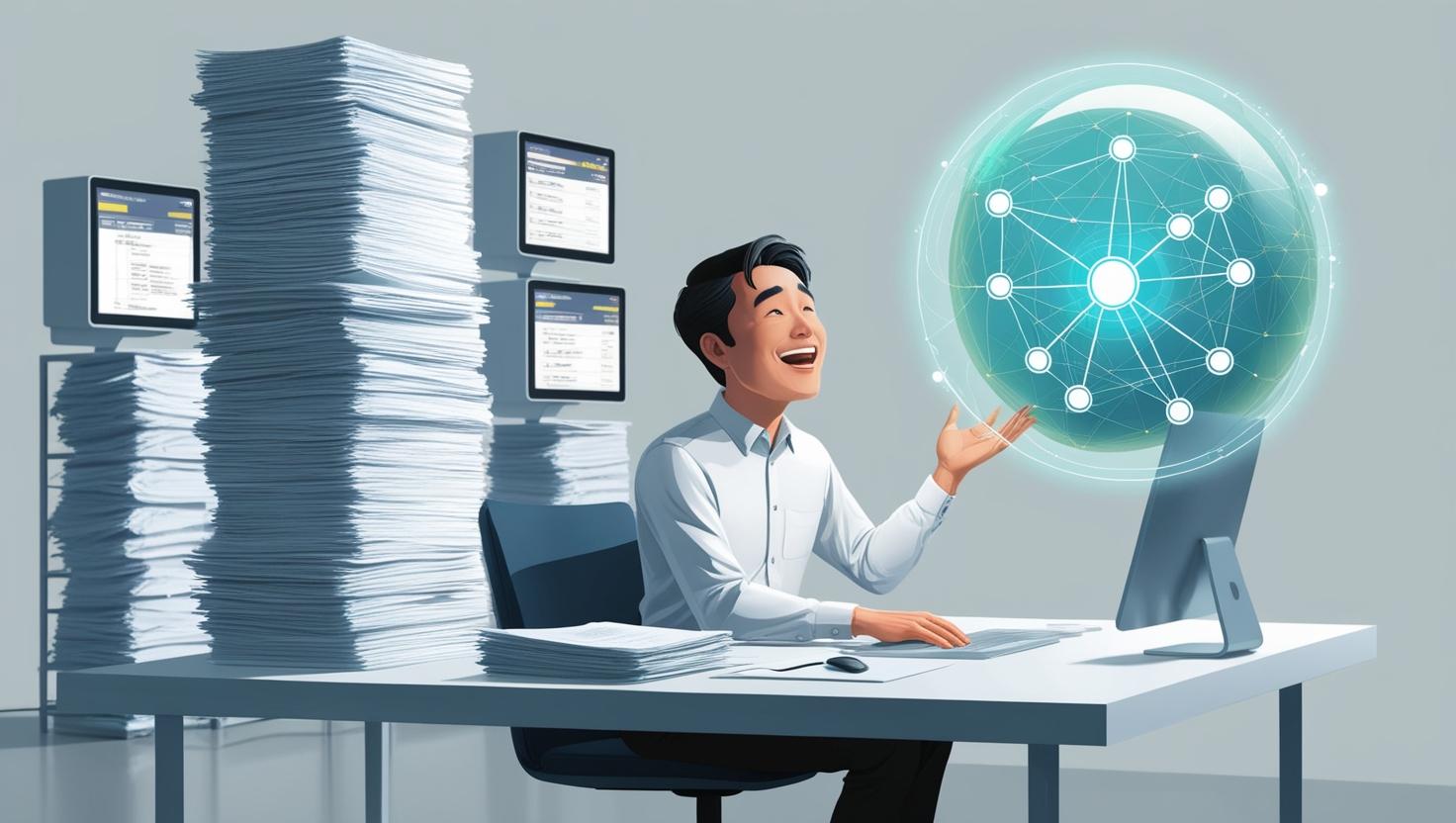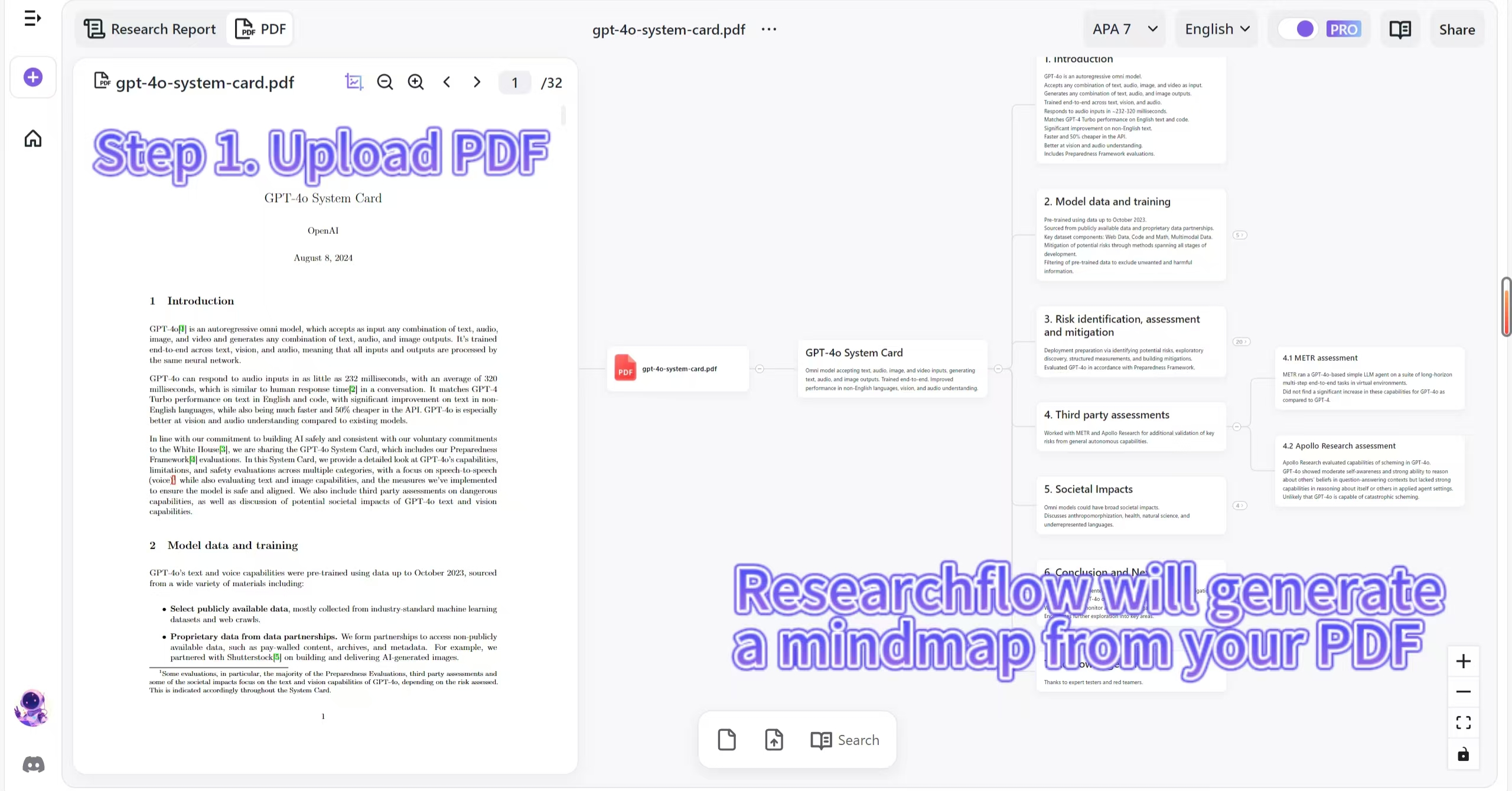5 Reasons Why Knowledge Maps Outperform Linear Chat for Deep Research

Picture yourself drowning in a sea of research papers, chat logs with AI assistants scattered across multiple windows, and a growing sense that you're missing critical connections between key concepts. This is the reality for countless researchers and academics in the age of information overload. While AI chatbots have revolutionized how we access information, their linear conversation format creates a fundamental limitation that constrains deep academic research.
Knowledge maps offer a powerful alternative. As visual representations of information that capture relationships between concepts, knowledge maps mirror how our brains naturally process complex ideas. They transform the research experience from a one-dimensional conversation into a dynamic, spatial landscape where connections become visible and insights emerge more readily. This paradigm shift is why platforms like Ponder are fundamentally changing how serious researchers approach their work—letting them see the forest and the trees simultaneously.

Knowledge Maps vs. Linear Chat: Understanding the Fundamental Differences
What Are Knowledge Maps?
Knowledge maps are visual representations of information that explicitly show relationships between concepts, ideas, and data points. Unlike traditional note-taking or linear chat interactions, knowledge maps organize information spatially, creating a visual network that mirrors the interconnected nature of knowledge itself. According to research published in the International Journal of Networked and Distributed Computing, knowledge maps significantly enhance comprehension of complex subjects by leveraging our innate spatial reasoning abilities.
The Limitations of Linear Chat for Academic Research
Traditional AI chatbots operate in a sequential, conversation-based format that fundamentally limits their utility for deep research. As noted in a recent study on large language models, these conversational interfaces create several obstacles for researchers: context limitations, difficulty in tracking multiple threads simultaneously, and challenges in visualizing relationships between different concepts. This linear approach forces researchers to mentally juggle complex interconnections—a cognitively demanding task that detracts from higher-level analysis.
How Ponder Transforms Research with Knowledge Maps
Ponder addresses these limitations by converting research papers into interactive knowledge maps. Instead of scrolling through endless chat logs, researchers interact with a dynamic canvas where concepts, findings, and methodologies are visually represented and interconnected. This research tool enables researchers to grasp complex academic material 10x faster by leveraging our brain's natural ability to process visual-spatial information.

Reason #1: Knowledge Maps Create Spatial Organization that Enhances Comprehension
The spatial organization of knowledge maps directly aligns with how our brains naturally process information. Research in cognitive science shows that humans have evolved sophisticated spatial memory systems that outperform our ability to remember sequential information. By organizing research material spatially rather than linearly, knowledge maps tap into these powerful cognitive mechanisms.
When exploring complex research topics, this spatial approach allows researchers to quickly recognize patterns and relationships that would remain hidden in linear text. For example, when analyzing multiple competing theories in a field, Ponder's knowledge maps can position related concepts in proximity while visually distinguishing contrasting viewpoints, making conceptual differences immediately apparent.
Reason #2: Knowledge Maps Provide Persistent Structure vs. Ephemeral Chat Conversations
One of the most frustrating aspects of chat-based research is the disappearing context—scrolling back through hundreds of messages to find a specific reference becomes a time-consuming chore. Knowledge maps solve this problem by creating permanent, visually accessible structures.
As research on visual knowledge representation demonstrates, persistent visual frameworks significantly improve information retention and recall. When using Ponder, each concept, finding, or question maintains its position within the larger knowledge structure, creating stable "landmarks" for navigating complex information landscapes. This permanence allows researchers to build on previous insights rather than constantly recovering lost context.
Reason #3: Knowledge Maps Excel at Multi-Document Integration and Comparison
Traditional chatbots struggle with multi-document analysis, often treating each paper as an isolated entity. Knowledge maps, by contrast, excel at highlighting connections and contradictions across multiple sources. Ponder's reading tool enables researchers to upload multiple PDFs and automatically identifies conceptual overlaps, methodological similarities, and contradictory findings.
This capability is particularly valuable for systematic literature reviews, where researchers must synthesize findings across dozens or hundreds of papers. According to the Enago Academy, visual knowledge mapping tools can reduce the time required for comprehensive literature reviews by up to 60%, while simultaneously improving the quality of insights generated.

Reason #4: Knowledge Maps Deliver Enhanced Information Retrieval and Recall
Linear research methods create significant cognitive load as researchers must constantly reconstruct mental models of complex information. Knowledge maps externalize these mental models, freeing cognitive resources for higher-level analysis. The visual nature of knowledge maps creates powerful memory anchors, with distinctive shapes, positions, and connections serving as retrieval cues.
Ponder enhances this natural process by implementing intelligent visual indexing of research content. Key findings, methodologies, limitations, and future research directions are automatically categorized and visually distinguished, creating an intuitive navigation system for complex academic material.
Reason #5: Knowledge Maps Facilitate Collaborative Research Environments
Research is increasingly collaborative, yet traditional research tools often create barriers to effective knowledge sharing. Knowledge maps provide a common visual language that transcends disciplinary boundaries and communication challenges. When a research team uses Ponder's thinking workspace, each member can immediately grasp the overall structure of the research landscape while drilling down into areas of personal expertise.
These shared visual frameworks enable more productive discussions, as team members can literally point to specific concepts and connections. This visual approach is particularly valuable for interdisciplinary research, where terminology and assumptions may vary significantly across fields.
Implementing Knowledge Maps in Your Research Workflow with Ponder
Getting started with knowledge mapping is remarkably straightforward with Ponder. Simply upload your research papers, and the AI automatically extracts key concepts, findings, and relationships to generate an initial knowledge map. From there, you can refine the structure, add your own insights, and connect related concepts across multiple documents.
The most effective approach combines Ponder's automated knowledge extraction with your own expertise and critical thinking. As you explore the knowledge map, you'll often discover unexpected connections and research gaps that inspire new directions for your work.
Conclusion: Knowledge Maps Are Reshaping the Future of Academic Research
The shift from linear to spatial research tools represents a fundamental evolution in how we approach complex academic work. Knowledge maps aren't simply a different way to visualize information—they enable a different way of thinking about information. By externalizing the complex web of relationships that make up a research domain, knowledge maps allow researchers to transcend the limitations of linear thinking and discover insights that would otherwise remain hidden.
As research continues to grow in volume and complexity, thinking workspaces like Ponder that leverage our innate spatial reasoning abilities will become essential for effective knowledge work. The researchers who master these deep research tools will gain a significant competitive advantage in their ability to synthesize existing knowledge and generate novel insights. Ready to transform your research workflow? Experience the power of knowledge maps with Ponder today.